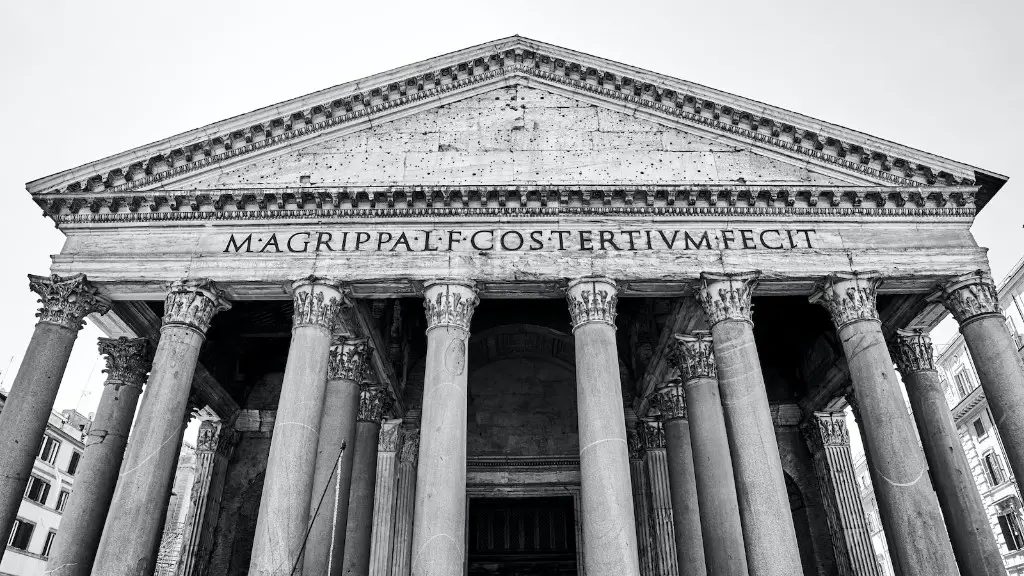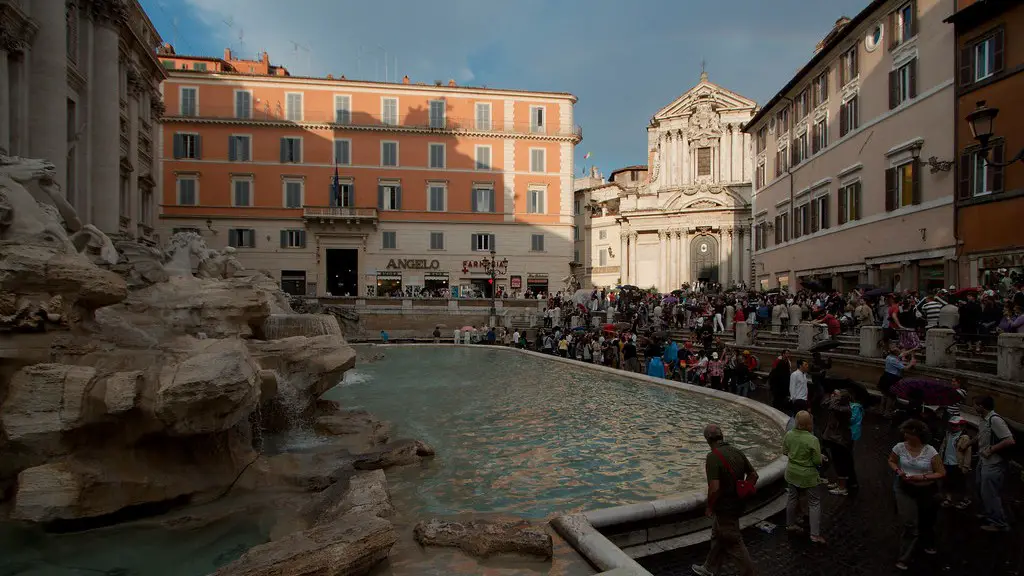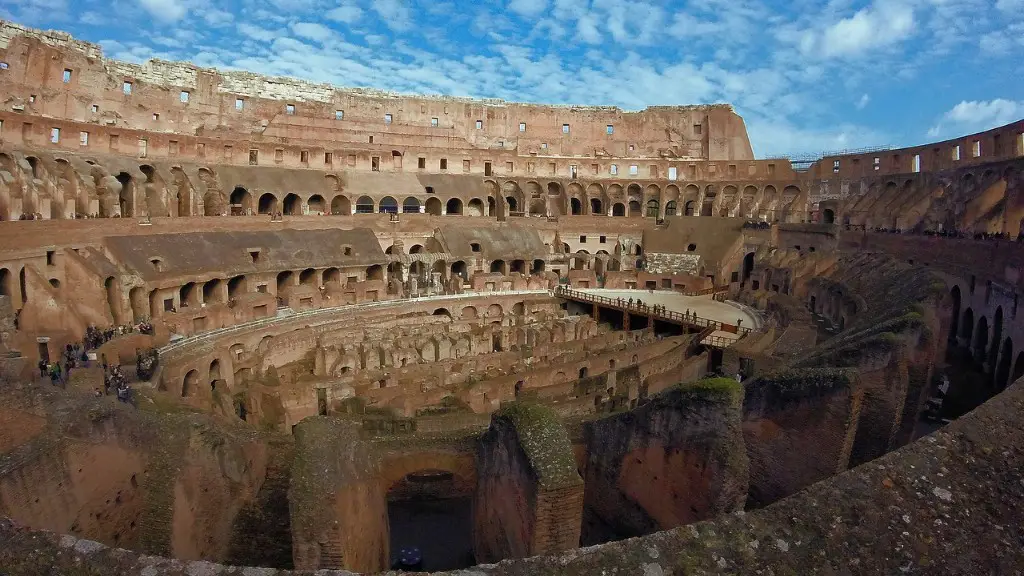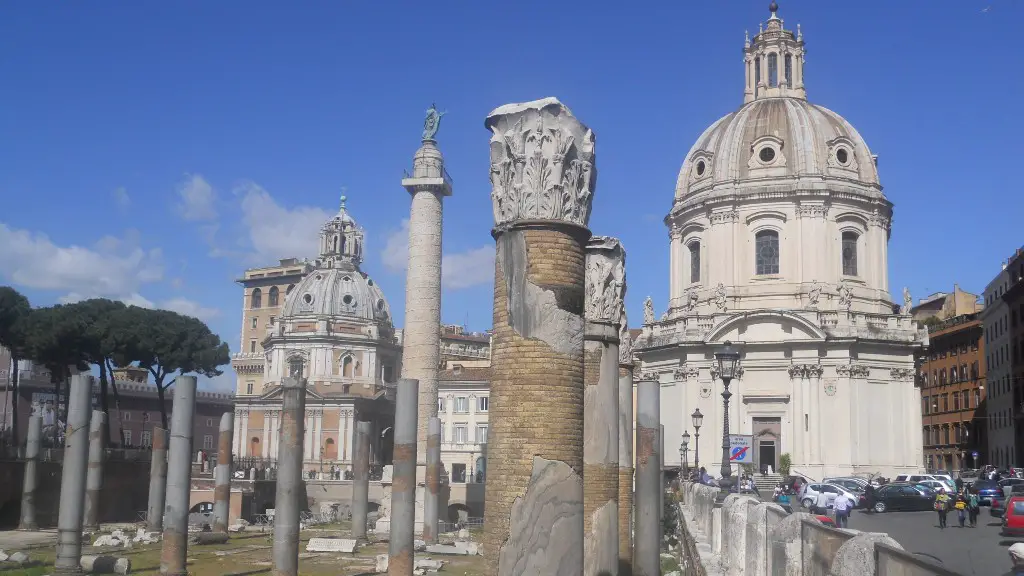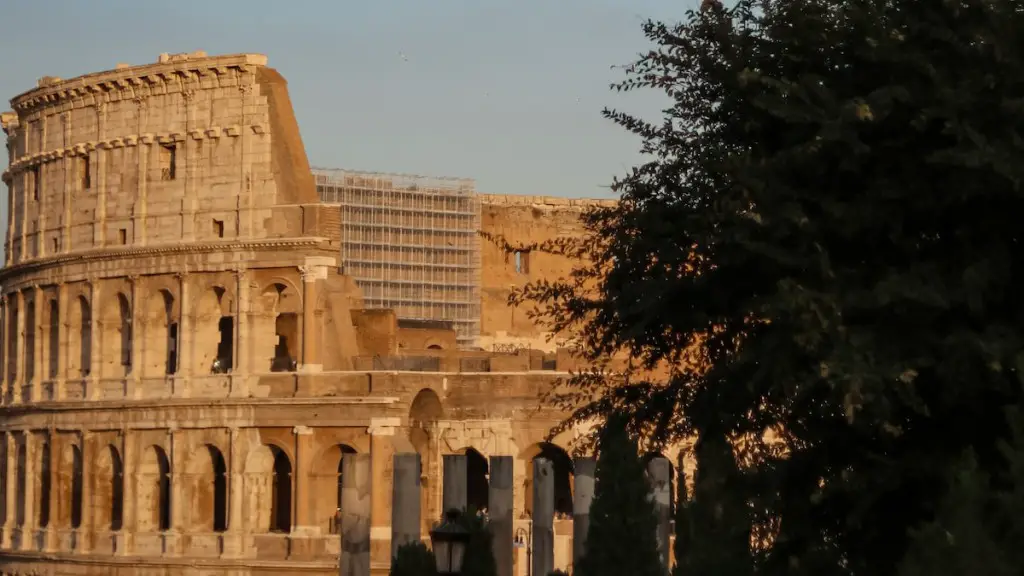Ancient Rome Religion
Rome had an established religion and pantheon when it was founded in 753 BCE, which fused with the ancient Greek religion in the 2nd century BCE. The ancient Roman religion, also called Roman mythology, was based mainly on the ancient belief systems of the Roman people. It was a polytheistic faith, with a pantheon of twelve gods, including Jupiter, Neptune, and Venus. These gods had different roles and domain, and were frequently depicted in art, literature, and even on coins. Ancient Rome was deeply religious, with grand temples and festivals honoring the gods.
The heart of Roman religious life was the sacrifice, made to a god to gain favor, as well as to commemorate certain events. These sacrifices could take the form of grain, animals, or wine, and were usually led by a priest, who would dress in special clothing and use special tools. Religious ceremonies were common in public places, such as the Forum and the Colosseum, and could also be held in private homes.
The Romans believed in omens, superstitions, and prophecies, which were believed to be signs from the gods. Ancient Romans read the entrails of birds and animals and consulted oracles, or seers, to foretell the future. They also read the gods’ will from the flight patterns of birds and from the stars. Religion played an important role in everyday Roman life; people prayed not only for material goods, but also for guidance and protection. Religion was a common feature of Roman life at all levels, from the private to the public.
The Roman gods had complex stories and histories, most of which were adopted and adapted from the Greeks. Roman myths were often religious in nature, rather than just stories of heroes and monsters. Many gods and goddesses showed up in different myths and stories, and had multiple roles and responsibilities. The stories of the gods were often used to explain natural events or moral lessons.
It was believed that the gods took part in daily life, and that they walked among humans, offering them both protection and comfort. Rome was frequently the target of military invasions, so the people turned to the gods to protect them from danger. The gods were believed to be able to grant favors, and often were held responsible for losses or misfortunes.
The death of Julius Caesar was a huge blow to the people of Rome. He was considered a god-king by some, and was frequently depicted in public buildings and in literature as a god. When he was assassinated, it was a major shock to the Roman people, and it caused serious political and social upheaval. Many Romans turned to religion to bring comfort and hope during this difficult time.
The legacy of the Ancient Roman religion lives on today. Many of the Greek gods have been adopted by other religions, and even modern art and literature often contain classical references to Roman gods. Despite the changes that have taken place over the millennia, the impact of ancient Rome’s religion still resonates strongly in the world today.
Religious Beliefs and Practices
Religious practices in ancient Rome were highly varied, with different gods and goddesses assigned different roles and areas of focus. As in other ancient societies, priests played a key role in religion, overseeing the rituals and workings of each temple. Priests were typically male, and acted as both the mediator between humans and gods, and as community oracles.
Sacrifices to the gods were made in both public places and at private homes. They were typically performed by the members of the family, and involved offerings of food, clothing, or incense. Gods of war, such as Mars and Bellona, were honored through animal sacrifices, while gods of the harvest, such as Ceres and Liber, could receive offerings of grain, fruit, or vegetables. The act of sacrifice focused on giving a gift to the gods and was believed to bring favor.
Religious ritual was an important aspect of Roman life, and most households had a small shrine dedicated to the gods of the family. These shrines usually contained effigies of the gods, as well as symbols or statues of their domain. Rituals such as prayers and sacrifices were performed at these shrines, both at home and in public places.
Religious life in ancient Rome was often colorful and vibrant. Processions with offerings and decorations were the norm, and people would often make pilgrimages to holy sites or to places where miracles were said to have occurred. People regularly visited temples and oracles to ask questions and seek divine help. Temples were often hubs of activity and bustling social centers, where people could share news, gossip and ideas.
Many festivals, plays, and dramatic performances were held in honor of the gods. These events were often staged in theatres, with plays and music designed to entertain and educate people about the gods and their myths. These performances were often elaborate and grand, and provided opportunities for people to come together and celebrate their faith.
Religion was also an important tool for political power and social cohesion in ancient Rome. Politicians often combined religious and political purposes, as well as using deities in their propaganda and marketing. During times of crisis and upheaval, religion could be used to unite people and inspire faith and loyalty. Religion was also used to bring people together in times of celebration and joy, with holidays, festivals, and games allowing people to revel in their faith.
Gods and Festivals
The gods and goddesses of ancient Rome were largely borrowed from the Greeks. Each deity had a complex mythology and accompanying symbol, and was worshiped for a different domain or aspect of life. These ancient gods and goddesses included Jupiter, Mars, Juno, Venus, and Neptune, each ruling over a different sphere, from war and agriculture to luck, love, and the seas.
The Romans also worshiped lesser gods and demigods, and had a range of minor gods and goddesses who were believed to have different roles and functions. These lesser gods included Janus, the god of transitions and doors; Carmenta, the goddess of childbirth; and Quirinus, the protector of the state. These gods, along with the many others in the pantheon, were believed to watch over the people of Rome, and were frequently offered up prayers and sacrifices.
Roman religious festivals were held to mark important events and to give thanks to the gods. Popular festivals included the Lupercalia, which was held every February to honor the gods, and the Saturnalia, which was celebrated from December 17th to the 23rd. The Vestalia was held to honor Vesta, the goddess of the hearth, and the Floralia celebrated Flora, the goddess of flowers.
There were also many festivals celebrating the gods of different Roman regions, such as Jupiter Optimus Maximus in Latium and Mars in Picenum. These festivals typically involved sacrifices, processions, and feasting. People would sing hymns and make offerings to the gods, and the festivities often lasted for days or even weeks.
The emperors of ancient Rome often called upon the gods to protect and guide them. Emperors were considered to be divinely appointed, further cementing their power and connection to the gods. Roman citizens could also give worship to the emperor, and it wasn’t uncommon to see temples dedicated to the emperor, or statues of him represented as a god.
Synagogues and Other Religions
although the ancient Romans were largely polytheistic, they were tolerant of other religions, and allowed people to practice their own beliefs without interference. In particular, the Romans were tolerant of Judaism, and allowed the Jews to practice their faith and construct synagogues. This tolerance was partially due to the fact that Jewish slaves were often used as servants in Roman households.
Other religions were also welcomed in ancient Rome, as long as they remained independent of the Roman pantheon. One of these religions was Mithraism, which was popular among the Roman military and offered a number of festivals and rituals to its followers. Eastern religions, such as the cults of Isis and Cybele, were also popular, although they were more heavily restricted than other religions due to their foreign origin.
Other religions such as Christianity entered Rome during the early empire, but had a much harder time gaining acceptance. Though the Romans were generally tolerant of other religions, the Christians refused to accept the gods of ancient Rome, which made them unpopular. Christians were seen as enemies of the state, and were frequently persecuted by the Romans, leading to their expulsion from the empire.
Despite this, Christianity remained popular and even grew during the centuries of Roman rule, eventually gaining acceptance as the official religion of the empire. The growth of Christianity ultimately led to the downfall of the Roman Empire, though it also brought with it a new faith and religion that continued to shape the world for centuries to come.
Religion in Literature and Art
Religion was a major theme in ancient art and literature, with gods and goddesses depicted in both realistic and fantasy depictions. Religion was also a popular theme in poetry, with poets often praising the gods and invoking their power. Classical mythology was a huge part of Roman literature, with gods and goddesses taking on heroic roles in plays and epic poems.
The gods and goddesses of ancient Rome were also depicted in realistic, human forms in paintings, sculptures and reliefs. The gods were often shown in scenes from mythology, such as Venus bathing in a pool of water. Many Roman coins, which were an important medium of communication, also often displayed religious symbolism and figures.
Religion also played a major role in politics and education. Politicians often invoked the gods in their speeches and writings, and used them to support their political goals. Ancient Rome was also a major center of learning, and students were encouraged to study mythology and religious texts.
The legacy of ancient Rome’s religion can still be seen today. Many stories, plays, and art works still depict the gods and goddesses of Rome, and they are still remembered by modern cultures around the world. Though many aspects of the religion have changed over time, it still remains a major influence in literature, art and politics.
Conclusion
Ancient Rome’s religion had a significant influence on the culture and everyday life of the people of that time. The pantheon of Roman gods and goddesses allowed people to connect with the divine, and ancient monuments and festivals were created to honor them. Ancient Rome also had a broad acceptance of other religions, some of which were later adopted by the empire, while others, such as Christianity, were persecuted by it. Though many aspects of Roman religion have since faded away, its legacy can still be seen in modern art, literature, and culture.
